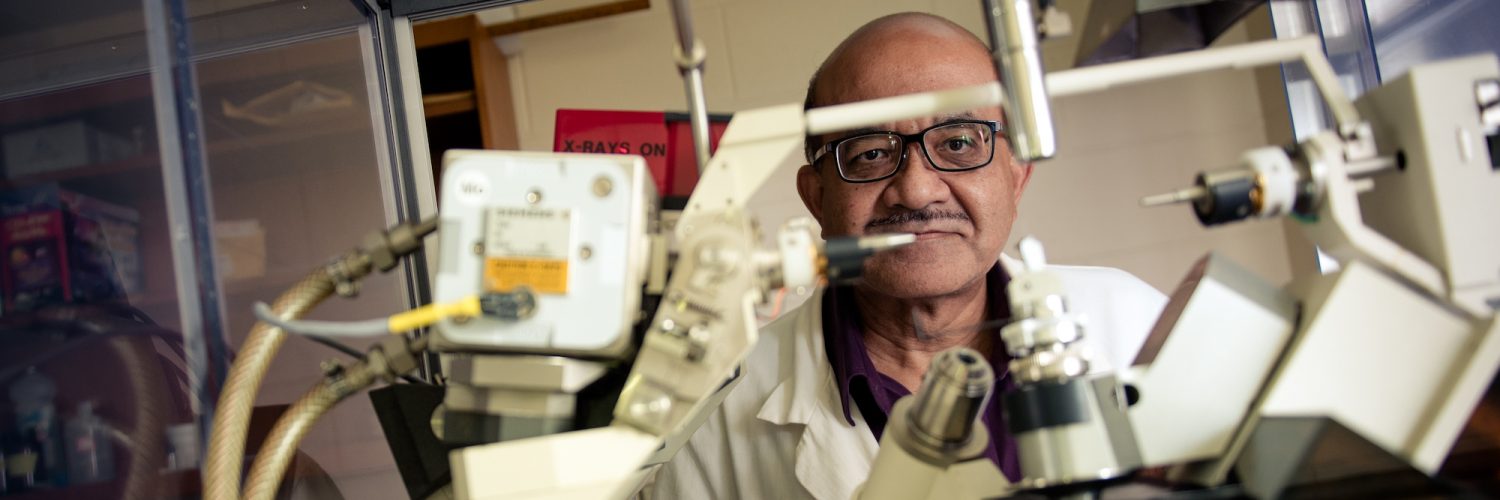Welcome to the Luck Lab!

Rudy Luck, a member of the inorganic chemistry division at MTU, has research experience in the area of low valent molybdenum complexes capable of activating dinitrogen (a derivative example shown below). This experience was obtained while working as a graduate student at the University of Toronto under Robert H. Morris.
 The precursor to this compound above where the isonitrile is replaced by diphenylmethyphosphine, is a very useful molecule featuring 3 s-bonded tertiary phosphine ligands and a p-bonded arene which has a dangling phosphorus atom. The dangling P-atom has been shown to act as a bridging ligand resulting in a wide and varied chemistry.
The precursor to this compound above where the isonitrile is replaced by diphenylmethyphosphine, is a very useful molecule featuring 3 s-bonded tertiary phosphine ligands and a p-bonded arene which has a dangling phosphorus atom. The dangling P-atom has been shown to act as a bridging ligand resulting in a wide and varied chemistry.
His research has also focused on the synthesis and characterization of heteronuclear quadruply-bonded metal-metal complexes and contributions in the area of molecular dihydrogen compounds, examples below. Some of this research was conducted with Frank A Cotton in the Laboratory for Molecular Structure and Bonding at Texas A&M University.
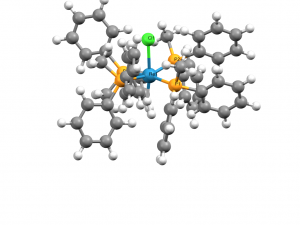
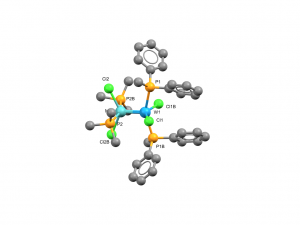
Work in this latter area has had an impact on the interpretation of the result from the T1 nuclear magnetic resonance spectroscopic measurement, which is applied towards the characterization of complexes suspected of containing the molecular dihydrogen ligand. More recent work has featured investigations into the catalytic applications of metal-oxo/peroxo systems in the area of epoxidation of olefins and the construction of metallo-framework cluster materials.
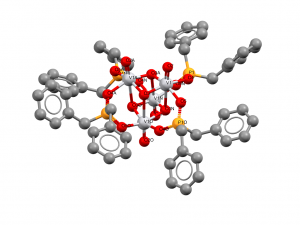
Additional research has featured theoretical calculations (using Gaussian) into luminescent probes that may have potential applicability as pH sensors and indicators for various contaminants within cells that may signal damage.
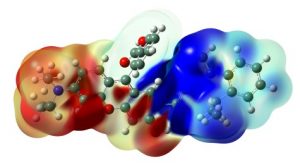

See the listing of the more recent publications for details of this research.
Research opportunities include syntheses of complexes capable of oxidation, use of natural zeolites and their modified forms to accomplish meaningful transformations of organic compounds, syntheses and characterization of various molecular probes. Complexes are analyzed by the usual spectroscopic techniques and by single crystal X-ray diffraction using an Enraf-Nonius Turbo CAD4 diffractometer. Theoretical calculations are conducted with the program Gaussian 16 which is available on a High Performance Computing system available at Michigan Tech.

